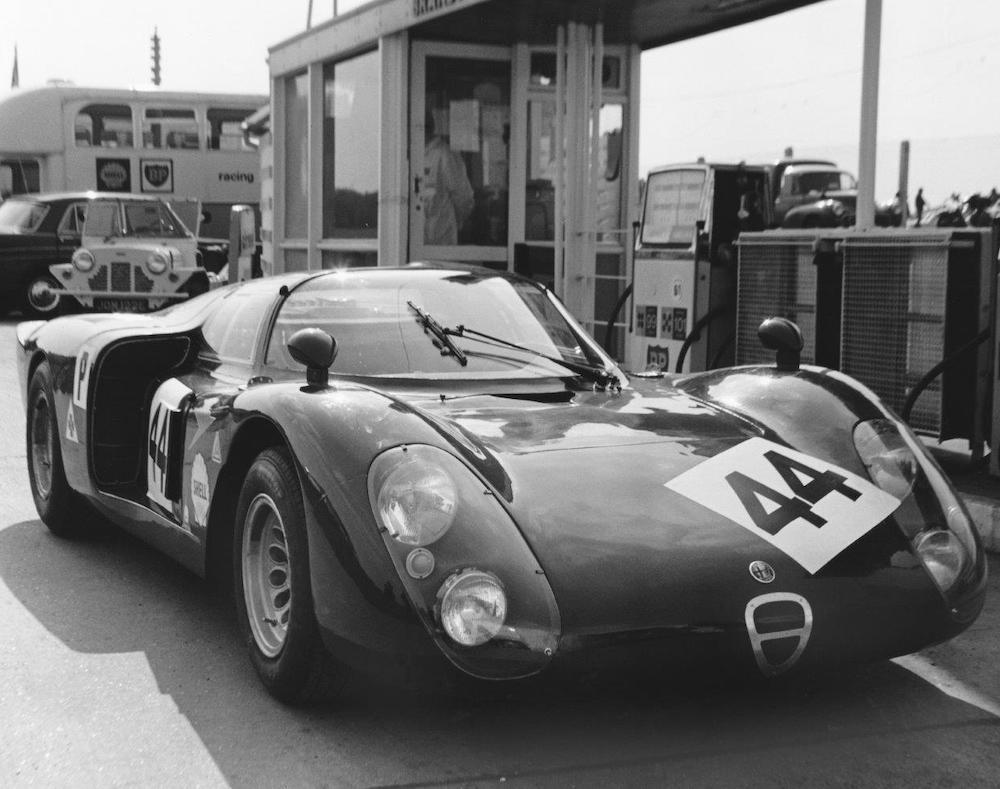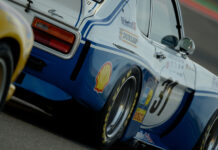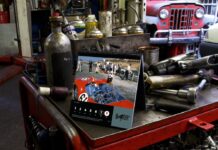Alfa Romeo took the decision to return to motor sport when, in 1963, it made Auto-Delta, an independent competition division, its official race preparation department. Created and overseen by Carlo Chitti, it was renamed Autodelta SpA and, in 1964, relocated closer to the Alfa Romeo factory where it had greater access to the Balocco test track.

Its first competition car was the TZ, an aerodynamic 2-litre coupe designed by Alfa Romeo prior to being race prepared by Autodelta. Chitti persuaded the factory to return to world championship sports car racing and in 1965 work began on the development of a new sports prototype model, the mid-engined Tipo 33, which was completed in time to contest the world series in 1967. The intention was to install the four-cylinder 2-litre engine from the TZ-2 but when the car was delivered to Autodelta it was replaced by an aluminium, 270hp, 1995cc V8 engine. The T33’s first competitive event was a Belgian hillclimb in March 1967 where Teodoro Zeccoli recorded an outright victory. However, the T33 proved both unreliable and uncompetitive in endurance events where it revealed a tendency to lift at speed. A fifth place at the Nurburgring was the team’s best result. The T33 underwent numerous modifications prior to the 1968 season and the revised car was renamed the T33/2. The handling problems were resolved once the ride height was lowered and the bodywork was revised to allow improved access for the mechanics; cockpit cooling was improved and cold air was directed to the brakes and engine bay. A three-car team of T33/2’s arrived for the first round of the championship held at Daytona in Florida. With the opposition and motoring press keeping a close watch, all three cars finished the race, coming home in 5th, 6th and 7th places overall, securing a class win. Having decided to miss the following race at Sebring the cars arrived for the BOAC 500 at Brands Hatch, hoping their light weight would give them an advantage around the tracks numerous corners but the highest placed T33/2 of Nanni Galli and Giancarlo Baghetti finished fourteenth. Alfa Romeo chose to miss further races during the year but the most significant results were recorded first at the Targa Florio in Sicily, notorious as a car-breaking race, where four T33/2’s finished in the top six, beaten only by a lone 2.2-litre Porsche 907, and at the Le Mans 24-Hour endurance event where they finished 4th, 5th and 6th overall and secured a further class victory. At the end of the season Alfa Romeo finished third in the International Championship for Makes and, having constructed a total of 28 T33/2 cars, it was homologated as a Group 4 car for the 1969 season. Further development saw numerous variations of the T33 compete until 1977.
The photograph shows the Alfa Romeo T33/2 of Nanni Galli and Giancarlo Baghetti parked at the refuelling pumps in the Brands Hatch paddock prior to the 1968 BOAC 500 six-hour race. The car finished fourteenth, twenty laps behind the winning Ford GT40, and was the highest placed Alfa Romeo.
From ‘Moments in Motorsport’ by Trevor Legate.










